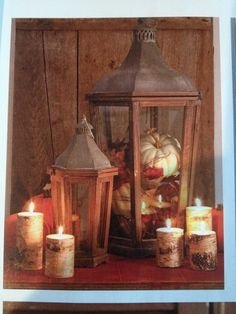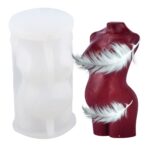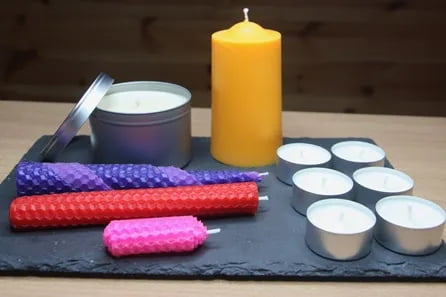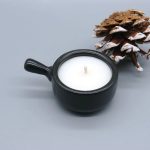Are you curious about using a digital thermometer for candle making? Temperature control is crucial in the candle making process, and a digital thermometer can be a handy tool for achieving the perfect pour.
In this article, we will explore the importance of temperature in candle making, understand how digital thermometers work, and discuss the pros and cons of using them. We will also provide a step-by-step guide on using a digital thermometer for candle making, along with some tips and tricks for accurate temperature measurement.
Candle making is an ancient art that has evolved over the years. Whether you’re a novice or an experienced chandler, having the right tools and equipment is essential to create high-quality candles. One such tool that can enhance your candle making experience is a digital thermometer. From understanding its importance to learning how to use it effectively, this article will cover everything you need to know about incorporating a digital thermometer into your candle making process.
Temperature plays a critical role in every stage of candle making – from melting the wax to adding fragrance oils and pouring the wax into containers. The accuracy of temperature control can make or break the quality of your candles. With advancements in technology, digital thermometers have become increasingly popular among candle makers for their precision and ease of use. Keep reading to discover how you can make the most out of using a digital thermometer for your candle making endeavors.
Importance of Temperature in Candle Making
Candle making is a delicate craft that requires precision and attention to detail, especially when it comes to temperature. The importance of temperature in candle making cannot be overstated, as it directly affects the quality and characteristics of the finished product. Whether you are a beginner or an experienced candle maker, understanding the role of temperature in the process is crucial for achieving desirable results.
Effects of Temperature on Candle Making
The temperature at which wax is melted and fragrance oils are added significantly impacts the final outcome of the candle. If the wax is heated too quickly or at a high temperature, it can result in discoloration, uneven texture, and even cause the fragrance to dissipate more rapidly. On the other hand, melting wax at too low a temperature can lead to improper adhesion of fragrance oils and wick sustenance, affecting both scent throw and burn time.
Using Digital Thermometers for Candle Making
Digital thermometers have become popular tools for candle makers due to their accuracy and ease of use. Unlike traditional analog thermometers, digital thermometers provide precise readings in a matter of seconds, allowing for quick adjustments to maintain optimal temperatures throughout the candle making process. This makes them an ideal choice for both beginners and experienced chandlers seeking consistent results.
Considering the precision required in candle making, digital thermometers have become an essential tool for achieving quality candles. Whether you are a hobbyist or professional candle maker
Understanding Digital Thermometers for Candle Making
When it comes to candle making, temperature control is crucial for ensuring the quality and consistency of your candles. Digital thermometers are a popular choice among candle makers due to their accuracy and ease of use. These devices provide real-time temperature readings, allowing you to monitor the wax as it melts and cools, as well as when adding fragrance oils and dyes.
Digital thermometers are equipped with a probe that is inserted into the wax to measure the temperature accurately. Some models come with a clip or base that allows you to attach the thermometer to the side of your melting pot or double boiler for hands-free monitoring. This feature is especially useful when working with hot wax and other candle-making ingredients.
Using a digital thermometer for candle making eliminates guesswork and helps maintain precise temperatures throughout the entire process. Whether you are a beginner or experienced candle maker, having this tool at your disposal can greatly improve the outcome of your candles.
| Pros | Cons |
|---|---|
| Accurate temperature readings | May require calibration |
| Real-time monitoring | Electronic components may be sensitive to heat |
| Ease of use | Initial cost may be higher than other types of thermometers |
Pros and Cons of Using Digital Thermometers
When it comes to candle making, temperature plays a crucial role in the process. It is important to maintain the right temperature throughout the different stages of candle making in order to achieve the desired results. In recent years, digital thermometers have become increasingly popular among candle makers due to their convenience and accuracy. In this section, we will discuss the pros and cons of using digital thermometers for candle making.
One of the main advantages of using a digital thermometer for candle making is its accuracy. Digital thermometers provide precise temperature readings, allowing candle makers to closely monitor and adjust the temperature as needed. This level of accuracy is particularly important when working with delicate wax blends or when creating specialty candles that require specific temperature ranges.
Another benefit of using digital thermometers is their ease of use. Unlike traditional mercury or dial thermometers, digital thermometers are often equipped with features such as backlit displays, automatic shut-off functions, and easy-to-read screens. These features make it easier for candle makers to monitor the temperature without any guesswork, resulting in a more efficient and controlled candle making process.
However, one drawback of using digital thermometers for candle making is their reliance on batteries. If the batteries run out while in use, it can disrupt the candle making process and potentially lead to inaccurate temperature readings. Additionally, some digital thermometers may not be as durable as traditional analog thermometers, making them more susceptible to damage if not handled carefully during the candle making process.
Step-by-Step Guide on Using Digital Thermometer for Candle Making
Using a digital thermometer for candle making is a convenient and accurate way to ensure that your candles turn out just right. Digital thermometers are easy to use and provide precise temperature readings, making them an essential tool for any candle maker. Here is a step-by-step guide on how to effectively use a digital thermometer for candle making:
1. Prepare your materials: Before you begin using your digital thermometer, gather all the necessary materials for candle making, including wax, fragrance oils, wicks, and containers.
2. Ensure the thermometer is clean: Before using your digital thermometer, make sure that it is clean and free from any residue that could affect its accuracy. Wipe it down with a clean cloth or alcohol swab if necessary.
3. Insert the thermometer into the wax: Once your wax is melted in a double boiler or wax melter, carefully insert the digital thermometer into the liquid wax. Be sure not to let it touch the bottom of the container to avoid false readings.
4. Wait for the reading: Allow the digital thermometer to sit in the wax for a few seconds to get an accurate temperature reading. Once the temperature stabilizes, take note of the reading on the display.
5. Monitor closely: Keep a close eye on the temperature as you continue with the candle making process. Adjust the heat source as needed to maintain the desired temperature for adding fragrance oils or pouring into containers.
6. Clean and store properly: After use, clean your digital thermometer according to manufacturer’s instructions and store it in a safe place for future use.
Using a digital thermometer for candle making can help you achieve consistent results and ensure that your candles turn out exactly as planned.
Overall, using a digital thermometer for candle making offers several advantages such as precision and ease of use. However there are also some drawbacks such as susceptibility to damage from accidental drops or exposure to high temperatures.
Tips and Tricks for Accurate Temperature Measurement
When it comes to accurate temperature measurement in candle making, using a digital thermometer can be incredibly helpful. Here are some tips and tricks to ensure that you are getting the most accurate temperature readings for your candle making process:
1. Calibrate Your Thermometer: Before starting your candle making process, it’s important to calibrate your digital thermometer. This can be done by immersing it in ice water and then boiling water and adjusting it accordingly. A properly calibrated thermometer will provide more accurate temperature readings.
2. Stir Well: When using a digital thermometer to measure the temperature of your wax, make sure to stir the wax well before taking a reading. This will help ensure that the temperature is consistent throughout the wax, giving you a more accurate measurement.
3. Check Multiple Spots: To get a true understanding of the temperature of your melted wax, take readings from multiple spots in the container. This will help you identify any hot or cold spots and adjust accordingly.
4. Be Mindful of Placement: When using a digital thermometer, be mindful of where it is placed in the wax. Keep it away from the bottom of the melting pot or any direct heat source to avoid inaccurate readings.
These tips and tricks can help ensure that you are getting accurate temperature measurements when using a digital thermometer for candle making, ultimately leading to better results with your candles.
Alternative Thermometers for Candle Making
When it comes to making candles, using the right tools and equipment is crucial in ensuring the success of your candle-making project. While digital thermometers are commonly used for temperature measurement in candle making, there are alternative thermometers that can also be utilized for this purpose. In this section, we will explore some of the alternative thermometers that can be used for candle making, their pros and cons, and how they compare to digital thermometers.
Traditional Glass Thermometers
One alternative to using a digital thermometer for candle making is a traditional glass thermometer. These thermometers have been used for many years and are still popular among candle makers. They are easy to use and provide accurate temperature readings. However, they may not be as quick or as convenient as digital thermometers.
Infrared Thermometers
Another alternative option is an infrared thermometer, which works by measuring the surface temperature of an object. Infrared thermometers are non-contact and can provide quick and accurate temperature readings without having to come into direct contact with the wax. However, they may not be as precise as digital or glass thermometers when it comes to measuring the actual temperature of the melting wax.
Candy Thermometers
Candy thermometers are also commonly used in candle making as an alternative to digital thermometers. These types of thermometers are designed specifically for measuring high temperatures, making them suitable for monitoring the temperature of hot wax during the candle-making process. However, like glass thermometers, candy thermometers may not provide instant readings and may require more time and attention to monitor the temperature accurately.
Conclusion and Final Thoughts on Using Digital Thermometers for Candle Making
In conclusion, digital thermometers are a convenient and accurate tool for candle making. The importance of temperature control in the process cannot be overstated, as it directly affects the quality and performance of the finished product. Digital thermometers provide quick and precise readings, allowing candle makers to achieve consistent results with each batch.
While there are some drawbacks to using digital thermometers, such as their susceptibility to damage from hot wax, they offer numerous benefits that make them a valuable investment for candle makers. Their ease of use, portability, and ability to provide readings in both Fahrenheit and Celsius add to their appeal. Additionally, many digital thermometers come with features such as programmable temperature alarms, which can be helpful for maintaining the ideal temperature during different stages of the candle making process.
Overall, digital thermometers are an excellent choice for candle making due to their accuracy and convenience. Whether you are a beginner or an experienced candle maker, incorporating a digital thermometer into your toolkit can greatly improve the quality and consistency of your candles. By following the step-by-step guide and implementing the tips and tricks provided in this article, you can confidently use a digital thermometer for candle making with ease.
Frequently Asked Questions
What Thermometer Measures Wax Temperature?
The thermometer used to measure wax temperature is called a candy or deep-fry thermometer. This type of thermometer is designed to withstand high temperatures and is perfect for accurately measuring the temperature of melted wax.
What Temperature Should Candles Be When Making?
When making candles, the recommended temperature for the melted wax can vary depending on the type of wax being used. Typically, for paraffin wax, the temperature should be between 160°F to 180°F, while soy wax should be heated to around 170°F to 180°F.
It’s important to follow specific guidelines for different types of wax to ensure proper candle-making.
Is There an Infrared Thermometer for Wax Melts?
Yes, there are infrared thermometers specifically designed for measuring the temperature of wax melts. These thermometers use infrared technology to accurately determine the temperature without having to come into direct contact with the melted wax. This makes them a convenient and practical tool for candle makers who want an easy way to monitor their wax temperatures.

Welcome to my candle making blog! In this blog, I will be sharing my tips and tricks for making candles. I will also be sharing some of my favorite recipes.





